Rail Loop: The Auckland Case
Below is the full independent review of the CBD rail link business case for the project commissioned by Auckland Council and Auckland Transport.
Unlike the Government-ordered review this concluded it would have transformative benefits to the region.
The review was prepared with the assistance of the following international experts: PricewaterhouseCoopers, Parsons Brinkerhoff, John Bolland Consulting, M.E Market Economics, Beca, GHD, Ascari, AECOM and the UC Berkeley Transportation Centre.
Executive Summary
Historically, a range of proposals have been developed for a rail tunnel through the Auckland city centre.
In 2010, a preferred route for a tunnel, the City Rail Link, was identified and work commenced on a concept design and Business Case to support designation of the route. In November 2010, Auckland Transport (AT) and Auckland Council (AC) in partnership with KiwiRail Group (KRG) presented the case for the City Rail Link to the government for its consideration.
The Minister of Transport (MoT) requested a review of the City Rail Link (or CBD Loop) proposal. That Review has been undertaken over the last 5 months and its report is expected to be released shortly.
The government led Review has provided AT and AC with an opportunity to further review the assumptions, refine the costs and benefits, and identify the further work needed to secure funding for the City Rail Link. All of this work has been made available to the government led Review team and the same material used to prepare this report.
The Review confirmed that the costs of constructing and operating the City Rail Link are accurately estimated, with a small increase in operating expenditure arising from new information which became available after the original Business Case was completed.
There was, however, a wide disparity between the benefits assessed by the MoT/Treasury Review compared with those estimated as part of the AT and AC update. This is largely due to the lower transport benefits assessed as part of the government led Review.
AT and AC consider that, taking into account the wider transport policy initiatives which are planned, the City Rail Link would deliver overall benefits exceeding overall costs, with the benefit cost ratio ranging from 1.1 to 2.3 (BCR = 1.1 to 2.3).
While there are differences between the findings of the government led Review and the AT/AC update, AT and AC and their advisors are strongly of the view that the overall evaluation results are sufficiently robust to justify the immediate commencement of the designation process, particularly as the CRL is economically justifiable in terms of its transport related benefits alone. This process needs to commence as soon as possible to minimise the potential for any development to increase costs, delay the project, or even prevent its implementation.
AT and AC acknowledge that, in line with all major project development programmes, more work needs to be done to further develop the case for funding of the City Rail Link. This work will take full account of central government‟s requirements for the development of public sector funding requests.
In addition to progressing with this work, this report recommends that the Auckland Council resolve to immediately commence the process to secure and protect the route of the Auckland City Rail Link.
This summary report presents AT and AC‟s key findings arising from participation in the government led Review of the City Rail Link project.
Background
In 2008, the then Minister of Finance, Hon Dr Michael Cullen, wrote to the Chair of the New Zealand Railways Corporation stating that it “was in the long term public interest to secure and protect the CBD tunnel route even though construction may not take place for many years” and advising that it was “appropriate for ONTRACK to assist in the protection of the CBD tunnel route by acting to protect the route at the earliest appropriate opportunity.”1
In 2009, the Auckland Regional Transport Authority (ARTA) and KRG (previously ONTRACK) commenced an investigation to designate a route for the City Rail Link (CRL) for inclusion in Auckland‟s District Plans. A preferred option for the route was identified in early 2010 and approved by ARTA and KiwiRail. This preferred option was endorsed by the Auckland Regional Council, Auckland City Council, and the Auckland Regional Transport Committee.
In 2010, a consortium of AECOM, Parsons Brinckerhoff and Beca (APB&B) was appointed by KRG and ARTA to identify the preferred route, prepare the concept design for the preferred option together with the business case to support the Notice of Requirement (NOR), and prepare the NOR documentation. In November 2010, AT, AC and KRG released the findings of this work (the Business Case) and forwarded these findings to the Government for its consideration. The work undertaken by APB&B was reviewed and endorsed by PWC.
The Minister of Transport asked the MoT and Treasury, in conjunction with the New Zealand Transport Agency (NZTA), to review the Business Case (the Review). The purpose of the Review was to formally review the Business Case and provide advice on the merits of the CRL as a transport and economic investment, and when the project might be required. The Review was also intended to assist in determining if, how and when to progress with the CRL. Management from AT and AC assisted in the analysis undertaken for the Review, supported by APB&B and others.
The Review was completed in May 2011 and the report setting out its findings is expected to be released by the Minister of Transport shortly.
Auckland Transport & Auckland Council Update
The government led Review process has provided AT and AC with an opportunity to further review the assumptions in the Business Case, to refine the costs and benefits of the CRL, and the transport measures which would be put in place to support its operation (AT/AC Update). It has also assisted in identifying the further work which will need to be undertaken to secure funding for the CRL.
AT and AC management and advisors have contributed to the Update in their specific areas of expertise. The opening page lists AT and AC advisors.
This summary report sets out the findings of the AT/AC Update. Further detailed information on the CRL can be found in the Business Case at www.aucklandtransport.govt.nz/improving-transport/current- projects/rail/pages/cbdraillink.aspx
Strategic Context
Auckland is New Zealand‟s biggest city and its largest regional economy. It is home to more than 1.4 million people, one third of New Zealand‟s population. It contributes 35 per cent of New Zealand‟s gross domestic product (GDP) and provides 32 per cent of employment. It plays a fundamental role in ensuring the economic success of New Zealand as a whole and will continue to do so.
Over the next 30 years, Auckland‟s population and its importance to New Zealand are projected to increase. Over that period, 75 per cent of New Zealand‟s population growth is expected to occur in Auckland. By 2040, 2.1 million people are expected to live in Auckland, an estimated 42 per cent of New Zealand‟s population.
Auckland‟s city centre plays a pivotal role. Of the 611,000 jobs in the region, 13 per cent are located in the CBD. The Auckland city centre provides the location for many of New Zealand‟s corporate head offices and employment in many high-value industries. These include 22 per cent of New Zealand‟s financial and services employees (11,300 employees), 17 per cent of information, media and communication services employees (6,500 employees), and 12 per cent of the professional, scientific and technical services employees (16,440 employees)2.
Auckland‟s city centre is also a centre for culture, recreation and leisure and a focus for international tourism, with 30 per cent of all bed nights in New Zealand spent in Auckland city centre accommodation3. It is also an education centre providing for the majority of Auckland‟s tertiary students, and contains New Zealand‟s largest container port.
Auckland‟s city centre relies heavily on its accessibility and quality of life for its continued prosperity and future development. Currently, around 20,000 people live in the city centre and there are some 90,000 employees and 50,000 tertiary students. Land use projections indicate that the usually resident population of the city centre will increase by 80,000 people by 2041, and employment by 60,000.
The ability of private transport to meet this growth will be severely limited by the capacity of streets in the city centre, parking constraints, and demands from buses and pedestrians. There are already significant constraints in the existing transport network, for example, within the roading network most approaches to the city centre are at or near capacity in peak periods. The bus network is already under pressure with significant constraints projected to occur in Symonds Street from 2014, Albert Street in 2016 to 2020, and Fanshawe Street by 2019.
The rail system also faces capacity constraints, primarily as a result of the limited capacity of the Britomart terminus. Once electrification is completed and the 10 minute peak timetable put in place, Britomart‟s practical capacity of 21 trains per hour in each direction will be reached. Patronage growth is expected to continue after electrification resulting in trains becoming progressively fuller, and placing stress on the Britomart station facilities. However, the ability of rail system to handle significant growth in patronage demand will be constrained by the limitations of Britomart‟s terminus configuration.
A further increase in demand for travel will impose critical pressure on the transport network serving the city centre and, without further investment, will result in worsening congestion, unreliability and delay.
nvestment in the transport network to cater for increased travel demand will be essential if Auckland is to achieve its goal of a thriving regional economy and becoming the world‟s most liveable city.
The Business Case considered a range of transport solutions to meet the future growth needs of the city centre.
Three options were identified and developed as part of the analysis. These were:
On surface bus capacity improvements Central area bus tunnel with three stations City centre rail tunnel with three stations (CRL).
The CRL was assessed to provide the most cost effective means of meeting the projected growth in transport demand to the city centre as it provides a dedicated rapid transit corridor through the city centre unaffected by traffic congestion. It unlocks latent capacity within the existing rail network that cannot currently be exploited due to the constraints of Britomart.
The CRL also provides the greatest opportunity to address the risks associated with Britomart as a terminus station with fixed capacity, and to improve its resilience. As the number of trains increases and patronage rises following the introduction of new electric trains, the risk of delay at Britomart increases with a consequential impact on reliability across the rail network.
Investment in upgrading Auckland‟s rail system over the last 10 years has demonstrated the willingness of Aucklanders to change their travel habits and use rail, with patronage increasing from 2.2 million trips million per annum to 9.5 million, a growth of 332 per cent.
City Rail Link – Project Description
The CRL provides for a 3.5 kilometre double track underground electrified rail line running under the Auckland city centre from Britomart to the Western Line near the existing Mt Eden station. Britomart would become a through station and three intermediate stations would be provided:
Aotea – under Albert Street between Wellesley and Victoria Streets Karangahape Road – under the intersection of Pitt Street and Karangahape Road
Newton – under Symonds Street between the intersections with Khyber Pass/Newton Road and Mt Eden and New North Roads.
A map of the proposed CRL route and stations is attached as Annex 1.
The CRL would have the potential to provide up to 30 trains per hour with enhanced signalling. This would provide for between 30 and 60 services per hour through the CRL stations, compared with the maximum 21 trains per hour which will be able to operate into Britomart after electrification.
The cost of building the CRL, including property acquisition costs, is estimated to be in the range of $2 billion to $2.38 billion (at 2010 prices). In addition, operation of more rail services enabled by the CRL will require additional rail network capital investment of $120 million to $130 million, and $240 million for more electric trains during the first 10 years following the opening of the CRL. Additional operating and maintenance costs of $18.1 million per annum will also be incurred.
Transport Benefits of City Rail Link
This section describes the transport benefits which would result from implementation of the CRL.
Rail will benefit the users of the rail system, bus users, and those who continue to drive. Rail has the ability to move more people more efficiently than other modes during peak traffic periods when congestion is at its highest, freeing up Auckland‟s congested motorways and arterials for freight, commercial, and other trips that cannot use public transport but are vital to economic development. Auckland‟s rail network closely parallels the southern and north western motorways, maximising the decongestion benefits.
More passengers boarding and alighting from trains at Britomart is likely to increase the potential for delays to services as the station facilities come under increased stress. Delays to trains at Britomart frequently result in knock-on delays across the network. Passengers are generally intolerant of unpredictable delays to services, so increasing reliability problems at Britomart could be expected to result in passengers choosing other modes rather than rail or choosing not to work in the city centre, reducing the benefits from having a large concentration of employment.
Changing Britomart station from a terminus station into a through station will also enable significantly increased train frequencies which will:
Address the problems expected to arise following electrification when patronage will continue to rise and trains will get progressively fuller
Provide for improvements in accessibility for both the city centre and the rail network as a whole
Increase the effectiveness and longevity of the Northern Busway reducing the need for suburban bus services from the south, west and east out of Britomart and the congested Albert Street bus corridor
Enable the rail network to be extended further and more efficiently due to the cheaper per kilometre operational cost of electric trains compared to diesels. The additional patronage opportunities as well as the benefits and costs of any future extensions are not included in the AT/AC Update
Expand the number of stations accessible by a single trip.
Providing three additional city centre stations also creates excellent direct access to city centre commercial, employment, shopping, tourist and cultural activities unaffected by road congestion. It gives commuters, shoppers and tourists a demonstrably cost and time effective alternative to using a motor vehicle. Further, it significantly expands the viable city centre area as journey times are reduced and accessibility is improved. Annex 2 illustrates the significant improvement in city centre accessibility which would result from the CRL.
Implementation of the CRL would be supported by a range of policies and external trends including:
Improved bus rail feeder services Wider park and ride provision Increased city centre parking charges Rising fuel prices.
Taken together, the transport outcomes delivered by the CRL during the congested morning peak traffic period by 2041 are projected to be:
Between 25,000 and 31,000 people will travel to the city centre by train i.e. at least 20,000 more people will use rail to get to the city centre than at present.
Reduction of around 8,600 car trips in the city centre in congested peak traffic periods.
Public transport mode share into the city centre will be around 69 per cent of trips, up from its current level of 46 per cent. Of this, the rail mode share will be 25 per cent, bus 39 per cent and car 31 per cent.
The Auckland rail network will attract between 23,000 and 29,000 more boardings each morning peak period than if there were no CRL, because of the higher frequencies across the entire network resulting from removing the constraint of the Britomart terminus. There will also be 14,000 to 19,000 more people using rail to get to the city centre than if the CRL is not built.
When travel distance is taken into account, rail becomes the dominant mode of travel to the city centre in the congested morning peak traffic period. The key economic driver of the transport benefits of the CRL for the regional transport system is that rail is more effective than any other mode in reducing congestion. This is because people who use rail travel longer distances than those using other modes, including buses and cars. As a result, rail is the most effective in removing long distance car trips from congested motorways and arterials.
Taking the travel distances by mode into account, mode shares for travel into the city centre during the congested morning peak traffic period change dramatically. With the CRL in place, rail accounts for 38 per cent of passenger kilometres compared to 30 per cent for bus and 27 per cent for car.
Figure 1 below illustrates the projected mode share of passenger kilometres in 2041.
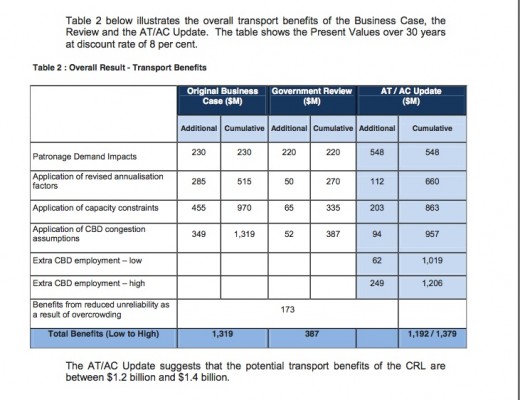
The AT/AC Update suggests that the potential transport benefits of the CRL are between $1.2 billion and $1.4 billion.
Economic Benefits Of City Rail Link
This section provides a summary of the transformational benefits that are likely to arise from the implementation of the CRL and the conventional assessment of the wider economic benefits (WEBs) as conducted in the Review.
The CRL is considered to be a transformational project as it will cause structural change to the determinants of travel (land use, population and economic activity) across Auckland. By contrast, conventional benefit cost analysis (including WEBS as calculated in the Review) requires no change in these factors. Benefits that come about from a transformational project are therefore distinct from the conventional definition of WEBs. As the Review has proceeded on the basis that the CRL is a conventional (i.e. non- transformational) transport project, the scope of the assessment is limited.
Conventional WEBs are direct and subsequent flow-on benefits for an economy that are created by new transport infrastructure. These benefits arise as the economy as a whole adjusts and responds to the changes in transport efficiency, and are over and above those direct effects identified for users of the transport network.
The CRL performs very well in terms of conventional WEBs, highlighting a project which will enhance the economic potential of Auckland‟s city centre in particular, and the Auckland economy in general. This occurs by increasing the efficiency of New Zealand‟s largest and most productive economy, increasing accessibility and reducing transport costs for firms and consumers in the first instance, and enhancing Auckland firms‟ competitiveness.
The WEBs for the CRL were originally calculated as part of the Business Case. A peer review of the WEBs by Professor Robert Cervero4, commissioned by APP&B, reinforced that “on balance … the APB&B analysis is thoughtful, well grounded, objective, reasonably transparent, and appropriately measured in its interpretations, assumptions, and forecasts”5.
MoT engaged Steer Davies Gleave (SDG) to assist with the Review. The Review then recalculated the conventional WEBs, and incorporated several new categories and improved the accuracy of the Business Case calculations. APB&B then recalculated the agglomeration effects taking into account SDG‟s review and concerns of the Review group. Due to data and time limitations, the WEBs were largely calculated as a proportion of conventional direct transport benefits, agreed to within the Review6.
Conventional WEBs are expected to generate an additional 53 per cent to 82 per cent of total conventional transport benefits or between $627 million and $1.146 billion over a 30 year appraisal period (at an 8% discount rate). When compared to other urban rail projects and measured as a proportion of conventional transport benefits, each category of WEB falls within previously established ranges7.
The CRL performs very well in terms of conventional WEBs. This is not surprising given the urban spatial structure of Auckland‟s economy. The relatively high additional effect of conventional WEBs is explained by the concentration of sectors in the city centre that benefit from co-location, together with the anticipated centralisation of high-value employment activity into the city centre. The latter effect is significant because of the substantial productivity differential between the city centre and the rest of Auckland, reflecting the role of the city centre as a key driver of growth for Auckland and New Zealand.
This assessment has not considered the transformational benefits which are likely to arise from the implementation of the CRL. The project is intended to increase land use intensity around the city centre, to increase net inward migration and to increase economic activity. The assessment of conventional WEBs holds each of these factors constant. Accordingly, the Review does not in AT and AC‟s view provide a full assessment of the CRL‟s value.
8 Summary Evaluation
The Review confirmed that the costs of constructing and operating the CRL were accurately estimated with around an 8 per cent increase, due mainly to operational expenditure increases arising from new information becoming available after the Business Case was completed.
There is a wide disparity between the results arising from the Business Case, the Review and the AT/AC Update, largely due to the lower transport benefits assessed by the Review.
The benefits and costs of the CRL are set out in Table 4 below comparing the Business Case, the Review and the AT/AC Update.
Table 4 shows that the CRL has a transport related benefit to cost ratio ranging between 1.0 and 1.1 and is a viable transport project in its own right. When WEBs are added, the BCR increases to between 1.1 and 2.3.
CRL Project Timing
It is estimated that the CRL can be completed within 7.5 to 10 years, depending upon the procurement method chosen. The design and consent phase is estimated to take between 2.5 and 4 years, while the design, construction and commissioning phase is estimated to take between 5 and 6 years.
Assuming the project proceeds by July 2011, the CRL could be constructed and commissioned by 2019 at the earliest or, taking a more conservative approach, by mid-2021.
10 Conclusion
The updated evaluation undertaken by AT and AC concludes that the benefit to cost ratio of the City Rail Link ranges from 1.1 to 2.3, clearly demonstrating that benefits outweigh costs.
While there are differences between the findings of the government led Review and the AT/AC Update, AT and AC and their advisors are strongly of the view that the overall evaluation results are sufficiently robust to justify the immediate commencement of the designation process, particularly as the CRL is economically justifiable in terms of its transport related benefits alone.
It is essential this process commences as soon as possible. Delay could result in significant difficulties, including the potential for development to increase costs, delay the CRL Project or even prevent its implementation.
AT and AC acknowledge that work needs to be done to further develop the case for funding. This work will be needed to support the AT and AC‟s own requirements to ensure value for money, and any bids for funding from central government and the private sector. This work will take full account of central government‟s requirements for the development of funding requests.
Assessment of Wider Economic Benefits for CRL
(Co-authored by Auckland Council‟s Economic Development Group, Market Economics and NZIER)
Executive Summary
Scope
The objective of this report is to consider an appropriate basis for evaluating the City Rail Loop (CRL), which is believed to be a transformational project. It also summarises the wider economic benefits (WEBs) as calculated under a conventional analysis. This is supported by an upcoming background document titled „Assessment of Wider Economic Benefits for the Auckland City Rail Loop‟, co-authored by Auckland Council‟s Economic Development 1 Market Economics Ltd and NZIER.
Key Issues
Auckland Council officers view the CRL as a transformational project as it is likely to cause structural change to the determinants of travel (land use, population and economic activity) across Auckland.
The evaluation to date is based on conventional appraisal, which does not capture many of the benefits of transformational projects. Auckland Council officers support WEBs in principle, but demonstrate how transformational project benefits are distinct from WEBs.
As the CRL is a transformational project, its benefits cannot be captured by conventional appraisal and therefore, a BCR does not fairly reflect the value for money of the project. Specifically, it cannot take account of potentially large benefits arising from changes to the urban spatial structure, land use intensification, increased inward migration and a larger economy.
Auckland Council officers seek to ensure that the CRL evaluation is appropriate and comprehensive, and able to provide a robust basis for future decisions – including route protection. The assessment scope is limited, as the Review to date has proceeded on the basis that the CRL is a conventional (ie non-transformational) transport project. The Mayor has reiterated that the project is likely to be transformational. Auckland Council officers need to do further work to develop the case for this.
The size of the Auckland economy and rapid growth rate mean other projects may also be considered „transformational‟, and it is important that robust methodologies for such projects are developed and applied on a consistent basis nationally.
Background
The CRL WEBs were originally calculated in the Business Case by APB&B. The interagency working group (IAWG) recalculated the WEBs, incorporating several new categories and improving the accuracy of the Business Case calculations. A Business Case review by Ministry appointed, Steer Davies Gleave (SDG) noted “the methodology employed [by APB&B] is broadly fit for purpose.” A further review of the WEBs by Professor Robert Cervero2, after seeing the SDG comments, reinforced that “on balance … the APB&B analysis is thoughtful, well grounded,
With assistance from the Research, Investigations & Monitoring Unit Robert Cervero is Professor of City & Regional Planning at UC Berkley as well as Director, University of California Transportation Centre; and Director, institute of Urban & Regional Development. Robert Cervero works in the area of sustainable transportation policy and planning, focusing on the nexus between urban transportation and land-use systems objective, reasonably transparent, and appropriately measured in its interpretations, assumptions, and forecasts3”. However, SDG noted a range of errors, omissions and questions of interpretation needed to be addressed to provide a correct representation of the likely wider benefits of the project4.
MoT identified and calculated three additional WEBs to include with agglomeration benefits in the analysis - labour supply, job relocation and imperfect competition effects. APB&B recalculated agglomeration effects taking into account SDG‟s review, and IAWG concerns. Data and time limitations meant WEBs were largely calculated as a proportion of conventional direct transport benefits, agreed to within the IAWG5. Table 3 illustrates the absolute WEB estimates to date as applied to the conventional transport benefits.
Wider economic benefit calculations and comparisons
WEBs are expected to generate an additional 53% to 83% of total conventional transport benefits ($627-$1,146 million over a 30 year appraisal period at 8% discount rate). All WEB categories fall within previously established ranges6 (of conventional transport benefits) of other international urban rail projects.
The CRL comprise a high proportion of WEBs, reflecting a project that will enhance Auckland CBD‟s economic potential in particular, and the Auckland and national economies in general. This occurs by increasing the efficiency of New Zealand‟s largest and most productive economy. High WEBs are explained by Auckland‟s urban spatial economic structure - a concentration of sectors in the CBD that benefit from co-location of firms, together with the anticipated centralisation of high-value employment activity into the CBD. The latter effect is significant due to the substantial productivity differential between the CBD and the rest of Auckland, reflecting the CBD‟s role as a key driver of growth for Auckland and New Zealand.
Transformational benefits
The core concern of Auckland Council officers throughout the CRL Business Case development has been to consider its potential to affect the size of the regional economy, to affect land uses, and its effect on sustaining Auckland‟s population growth. These are the core determinants of the demand for travel.
Auckland Council officers acknowledge the particular method used to incorporate these „regeneration benefits‟ in the first cost-benefit appraisal (CBA) could be improved on. However, it is firmly believed that the CRL will cause major changes to determinants of travel, and that this must be a core element of a fit-for-purpose economic appraisal. The IAWG has imposed conventional transport appraisal methodology upon this project that requires to entirely rule out any such transformational effects. Auckland Council officers want central and local government to work together to appraise potentially transformational projects differently. This section briefly explains the essence of this issue.
Regional economic growth
A strong interrelationship exists between transport provision and regional economic activity. Large improvements in transport efficiency and firm productivity will likely generate changes in the size, nature and rate of growth in the economy overall. Improved economic growth can be expected in such a case because transport infrastructure is pervasive, affecting all sectors of the economy and society, resulting in a more efficient and competitive regional and national economy.
However, conventional transport CBA treats economic activity as exogenous (imposed from outside the system). Although current CBA methods can take account of marginal effects to the economy7, it cannot take account of any structural effects to the economy that change the quantity of transport demanded for any given cost of travel8. This is potentially a major source of benefit that has been ruled out of consideration in the Review‟s evaluation.
As analysed by SDG. Net job relocation benefits is the exception where only three projects have been assessed. As such, no meaningful comparison can be made. Via inducing the quantity of transport demanded because of downward sloping demand curves. That is, the entire demand schedule for travel may further to the right in the long-term if the project had have been done than if it had not. This increases the willingness to pay for travel for any given level of travel relative to the business as usual (BAU) scenario.
In summary, there are projects that make major changes to the determinants of travel, and as such, there is potentially an entire class of benefits that will occur in actuality. Depending on the project, such benefits can be substantial. Appraisal methods need to be improved to take account of such benefits. Auckland Council officers believe the CRL is such a project, but that more work is required to demonstrate the likelihood of this.
Valuing the future appropriately
The Business Case uses an appraisal period of 30 years and a base social discount rate of 8% with sensitivity testing at 6% and 4%, consistent with NZTA EEM methodology. The 8% real social discount rate follows the Treasury‟s default guidance. Auckland Council officers do not support the basis for this high discount rate, nor an arbitrary 30-year cap on the length of the project appraisal period.
The current 8% social discount rate is a pure „social opportunity cost‟ (SOC) rate (the social return on private investment). While the SOC rate is an important economic concept in isolation, using a pure SOC rate for the social discount rate is not well grounded in modern economic theory. The social discount rate should appropriately reflect society‟s preference for trading off costs and benefits sooner against costs and benefits later. The current discount rate is too high to achieve this purpose and creates a bias against projects that are in the country‟s long-term interest. The social rate of time preference (approximately 3%-4%9) is the only appropriate social discount rate, and the effects on private capital displaced and augmented need to be explicitly considered10. For instance, using the UK methodology would see net present value benefits increase by some 4.5 times, while construction costs would only increase by around 75%.
The CRL benefits will extend well beyond the 30 year appraisal cut-off date. Even at the high 8% rate, the present value benefits are substantially greater (by 25%- 100%) at longer appraisal periods, for a wide range of benefit growth scenarios.
The UK uses a non-uniform discount rate starting at 3.5% for the first 30 years and 3% for years 31-60, and an appraisal period of 60 years for transport projects. This latter feature is called the „shadow price of capital‟ and is the approach recommended in leading textbooks (eg Boardman, A, Greenberg D, Vining A, Weimer D (2006) Cost Benefit Analysis; Concepts and Practice. Pearson Prentice Hall, New Jersey).
Employment reallocation
Although it may have fallen short of proving the likelihood, the original Business Case work effectively demonstrated the feasibility and credibility of projects like the CRL to cause major changes in land use intensification and job location. These are structural changes that take time to occur, and can substantially affect travel demand. A project that induces such changes may cause a greater willingness to pay for travel at all levels of travel than would have occurred in the business as usual scenario.
Changes to regional migration and even national population
As highlighted in modern literature, population moves across localities in response to: (a) amenity benefits of a locality; and (b) productive opportunities in a locality. A change to either of these may cause a population and employment inflow. A regional population increase can affect the demand for travel in the option scenario entirely differently to the BAU scenario. Again, this potentially leads to a new set of „transformational benefits‟.
Best practice cost-benefit analysis11 is to extend the appraisal period over the useful life of the project or to include a residual value that achieves the same purpose. NZTA uses the 30-year cut-off to treat all projects equally, which is acceptable within the context of NZTA‟s own budget routine funding allocations. However, the CRL is not competing for the same funds from, say, a rural road realignment, and is fundamentally different to routine road projects for many reasons. Auckland Council officers insist that an appropriate appraisal period for the CRL itself must be used.
Full coverage
Ministry of Transport and Treasury report
Ministry of Transport explain their decision
Minister, Len Brown and Greens react
Auckland must fight back: And more reaction
Mike Lee says decision major setback
The correspondence between the Govt agencies and the Minister

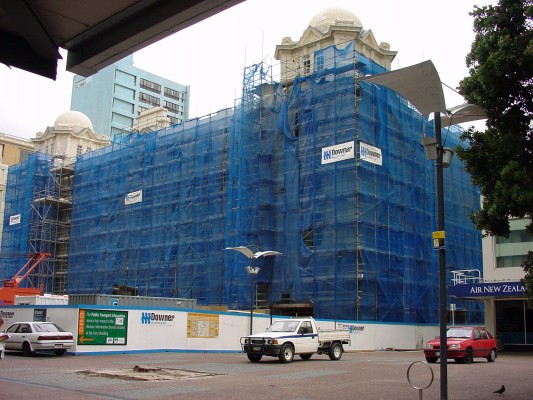
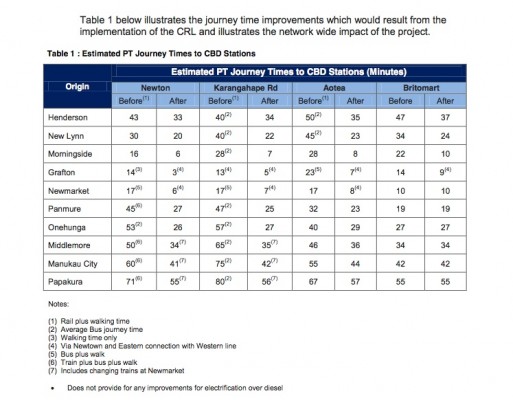
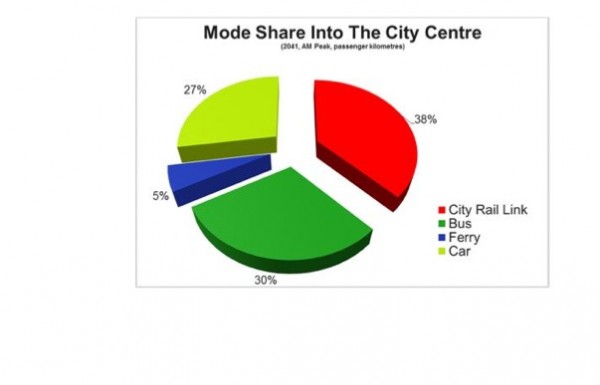
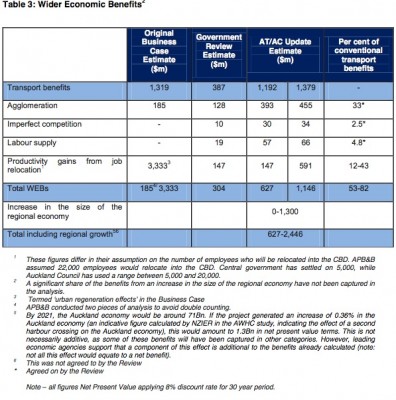
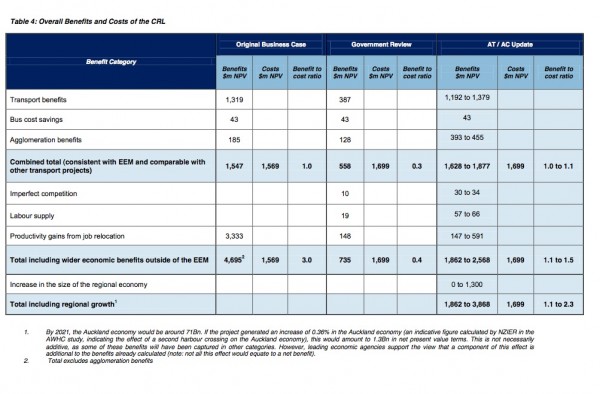

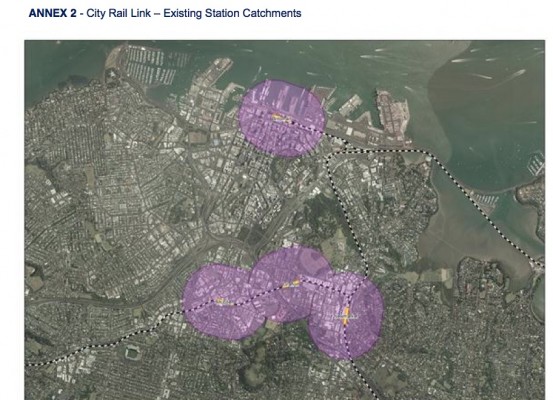
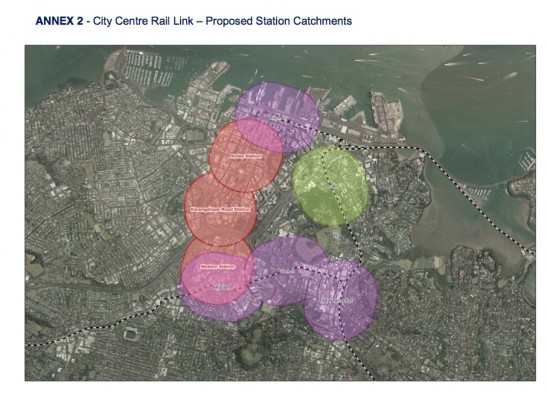
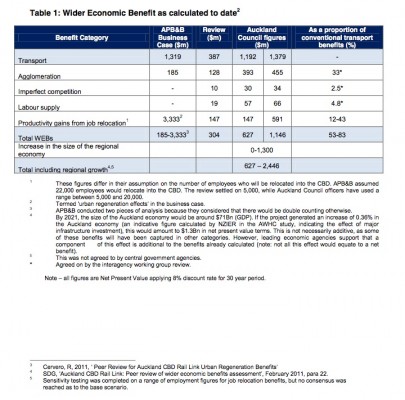










6 Comments
What amazes me is that this report seems to be totally opposite to the “official” one.
One therefore has to question who is right?
The truth is likely to be somewhere in between.
BTW, there is no “independent” report. The council case was put together by vested interests in such projects.
Hopefully attention will now turn to getting on with all the other, so far neglected, options for growing rail patronage in Auckland.
The good news is Geoff that AC now gets on with designating the route and planing the Link, and we can all get on with helping our fellow citizens see what a visionless bunch of owned small town hicks this government is.
They were always getting on with designating the link, so doing something they were already doing isn’t news as such. But yes, a designation will make a world of difference. If they hadn’t designated the Southdown-Avondale line 48 years ago, it would never have been built!
[...] and the list of international experts backing Auckland Council’s much less pessimistic report certainly reads much more impressively. Greg Presland at Future West points out that even the [...]
look at the massive improvements time-wise this would make to the network, a huge people puller in itself with out the other added benefits.